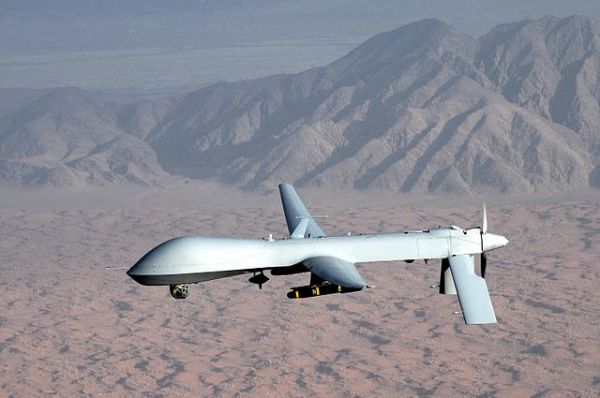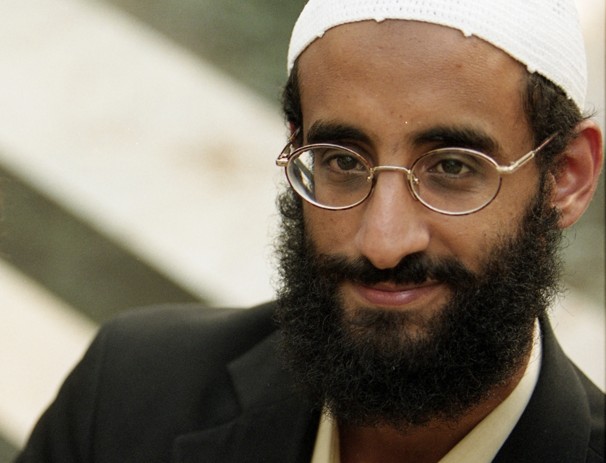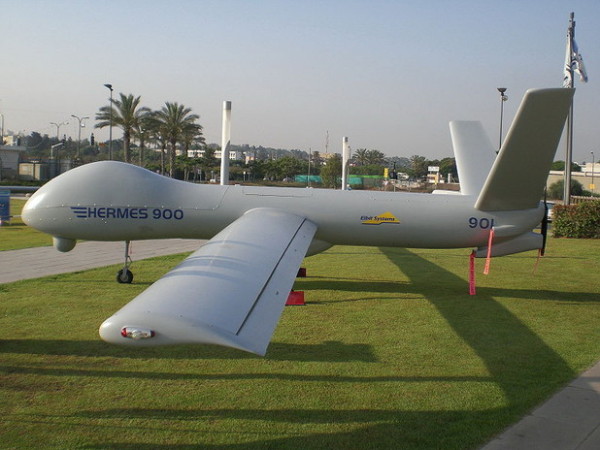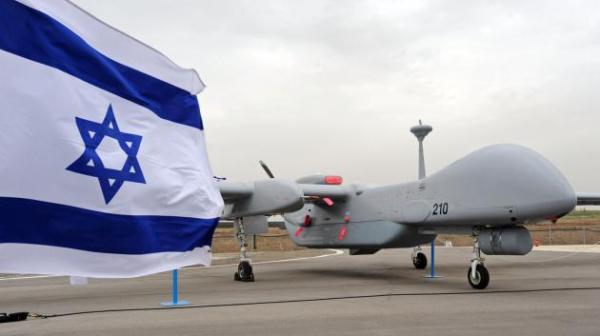In an article published last July in the Los Angeles Times, veteran journalist Doyle McManus noted, “The drone has become America’s counter-terrorism weapon of choice.”
Controlled by operators from the ground thousands of miles away, or at American bases in places like Djibouti or in the United States itself, drones carry lethal missiles, can hover for hours over potential targets and kill suspected terrorists with relative precision. And, of course, they don’t endanger American lives.
First utilized in the 1990s in the Balkan wars, their use has dramatically escalated in Afghanistan, Iraq, Pakistan, Somalia and Yemen since 2001.

According to the Bureau of Investigative Journalism, an independent not-for-profit organization established in April 2010 in Britain, over 3,000 people, including nearly 500 civilians, have been killed by drones since President Barack Obama assumed power.
Since 2004, drones controlled by the CIA’s Special Activities Division have attacked 401 targets in northwest Pakistan, especially in the Federally Administered Tribal Areas, where the Pakistani Taliban operates. Total deaths as of October 2014 number between 2,383 and 3,858, of which 416 to 951 were civilians.
From 2007 to the end of October, Somalia’s al-Shabab has been targeted by nine drone strikes, resulting in upwards of 30 reported deaths, virtually all of them militants. An attack in September killed Ahmed Abdi Godane (also known as Mukhtar Abu Zubeyr), the alleged mastermind of al-Shabab’s attack on an upscale shopping mall in Nairobi, Kenya, in September 2013.
Ansar al-Shari’a (Al-Qaeda in the Arabian Peninsula), formed in January 2009 from a merger of al-Qaeda’s Yemeni and Saudi branches, has helped destabilize Yemen, with suicide bombings and armed attacks.
Confirmed U.S. drone strikes in that country since 2002 number between 67 to 79, but the figure may be as high as 100. The total number of people reported killed range between 347 and 503, among them 26 to 68 civilians — but again, these numbers may prove to be much higher.
The greatest number of drone strikes has taken place in Afghanistan, as part of the 13-year war against the Taliban — more than 1,000 since 2008 alone. Dozens of armed drones fly over Afghanistan every day.
But given conditions in that war-torn country, many strikes may go entirely unreported. Still more include only the vaguest details.
A report released this past February by the United Nations Assistance Mission in Afghanistan (UNAMA) found that drone strikes accounted for at least a third of all civilian deaths in air strikes last year. UNAMA notes that it is sometimes difficult to establish which type of aircraft carried out a strike, so the true total could be higher.
While the House and Senate intelligence committees of the U.S. Congress are responsible for scrutinizing the highly classified CIA drone program, some have complained about being denied information. In any case, according to one source, “It’s a serious question as to how much any elected official could possibly understand about what’s going on inside” the intelligence agencies.
For example, Abu Yahya al-Libi, a high-ranking al-Qaeda official, was killed by a drone in June of 2012 in Mir Ali, in the Pakistani tribal area of North Waziristan. But the missile that killed him was part of a sequence of attacks that killed between 14 and 18 people.
A story in the Washington Post reported that after an initial strike, drones returned to attack those carrying out rescue work. But apparently committee members were only shown video covering the final part of the incident, giving a misleading impression that concealed over a dozen deaths.
Some of the deaths from drones include U.S. citizens, Attorney General Eric Holder testified before the Senate Judiciary Committee on March 6, 2013.

In September 2011 three high-profile terrorists, radical cleric Anwar al-Awlaki, his teenage son Abd al-Rahmn Anwar al-Awlaki, and Samir Khan, who ran al-Qaeda’s web-based propaganda magazine Inspire, were killed in an air strike in Yemen. And a drone killed Jude Kenan Mohammed in an attack in Pakistan in November 2011. All were American citizens.
In October 2009, the UN’s Special Rapporteur on extra-judicial, summary or arbitrary executions, Philip Alston, called on the U.S. to demonstrate that it was not randomly killing people in violation of international law through its use of drones on the Afghan-Pakistani border.
Alston, a professor of international law at New York University, maintained that the use of drones was not combat as much as “targeted killing,” and in his report to the UN Human Rights Council in 2010 asked the American government to “specify the bases for decisions to kill rather than capture particular individuals,” and also requested that they “make public the number of civilians killed as a result of drone attacks, and the measures in place to prevent such casualties.” (Washington did not provide the information.)
Alston contended that “intelligence agencies, which by definition are determined to remain unaccountable except to their own paymasters, have no place in running programs that kill people in other countries.”
A further question is the extent to which operators become trigger happy with remote controlled armaments, situated as they are in complete safety, distant from the conflict zone. The morality of drone warfare is bound to remain a contentious issue for the foreseeable future.
While many in the United States are concerned with the moral issues surrounding the use of drones, this is not much of a factor in Israel, surrounded as it is by enemies many times its size and population. The country has become a major player in the development of drones.
According to a 2013 report produced by U.S. consulting firm Frost & Sullivan, Israel is now the largest exporter of unmanned aerial systems.
The report said that from 2005 to 2012, Israel exported some $4.6 billion worth of systems, including aircraft, payloads, operating systems and command and control caravans. One of the main producers, Israel Aerospace Industries, unveiled the Super Heron refinement of its Heron drone at the Singapore Air Show in February 2014.

The Hermes 450, built by Elbit Systems, has been “fighting terror for over a decade” and the company touts the aircraft as the primary weapon used in counter-terror operations.
Israeli officials have said the air force has been rapidly building a UAV fleet at the expense of manned aircraft. It has reached a point where more than 50 percent of flights have been conducted by drones as part of reconnaissance and other missions.
Israel is one of only three countries that have used armed drones in conflict. It has launched numerous drone strikes in the Gaza Strip during the wars with Hamas. There is also evidence that Israel has used its armed drones to undertake attacks in Sudan, an ally of Iran.
In 2013, an Israeli official confirmed the use of combat drones, and envisioned the use of drones that could both conduct reconnaissance as well as fire missiles.
Jordan, in April 2013, allowed Israel to fly military drones over the country en route to Syria in order to monitor the situation there and, should the need arise, target chemical weapons caches in the civil war-torn country.
Israel’s drones are technologically superior and able to evade detection by the Russian air defence systems used by the Syrian army, according to experts.

In August 2012 Ibrahim Awaida, who was responsible for attacking a troop carrier in Eilat a year earlier, was killed by an Israeli drone in Egypt’s lawless Sinai Peninsula. And an Israeli drone strike killed five suspected Islamic militants and destroyed a rocket launcher in Sinai in August 2013.
For Israel, the enemy is close and dangerous, and drones are a very useful weapon.
Henry Srebrnik is a professor of political science at the University of Prince Edward Island.

